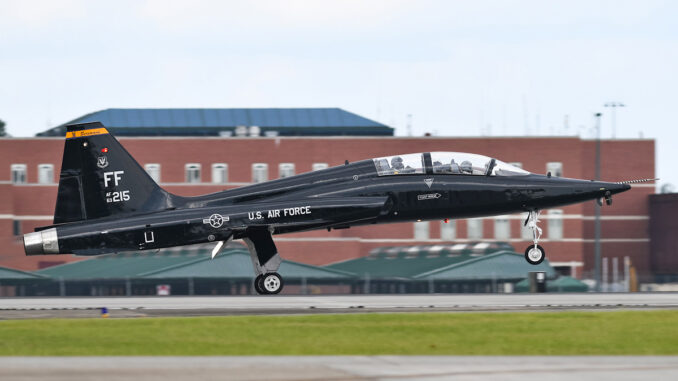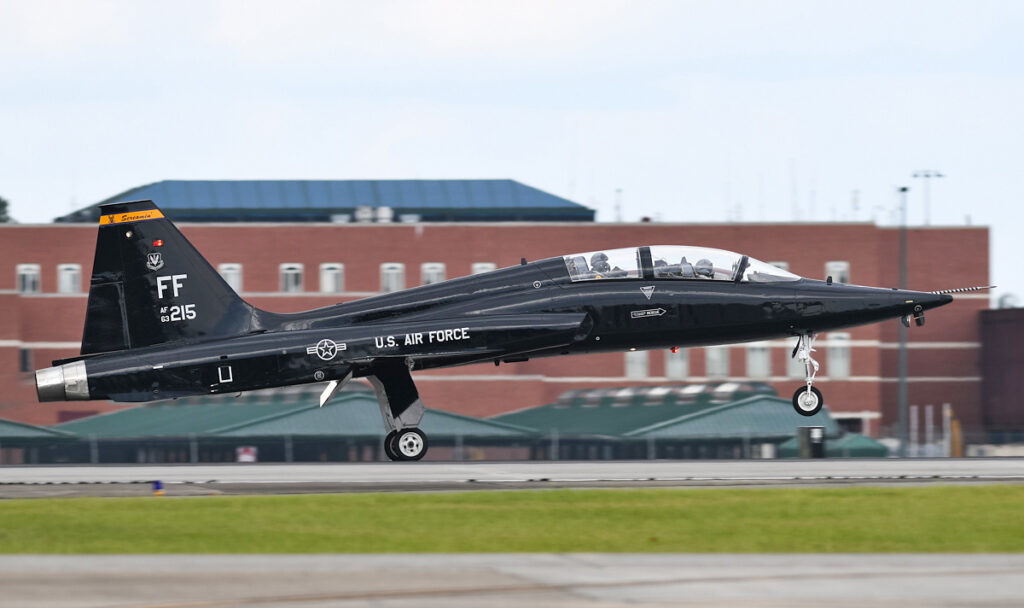
Faced with a shortage of 1,848 pilots, the Air Force is redirecting its graduates towards non-fighter aircraft jobs to meet the shortage.
Faced with a shortage of pilots, the US Air Force has introduced a new policy. New graduates of T-38 Talon training will no longer be assigned exclusively to fighter aircraft or bombers, but to a wider range of aircraft. This measure is designed to reduce waiting times and maximise pilot production to make up for a current shortfall of 1,848 pilots, including 1,142 in fighter units. This will enable the air force to meet its operational requirements while optimising the use of its training resources.
The scale of the pilot shortage in the US Air Force
The shortage of pilots in the Air Force has been a persistent problem for about a decade. The shortfall of 1,848 pilots, including 1,142 in fighter units, represents a major strategic challenge to the operational capability of the US armed forces. This shortfall is due to a number of factors, including difficulties in recruiting and retaining qualified pilots, despite substantial financial incentives, such as bonuses of up to $35,000 (around €32,800) a year for experienced pilots.
In addition, maintenance problems with training aircraft such as the T-38 Talon have reduced training capacity. The frequent breakdowns and ageing of these aircraft, which have been in service for more than 60 years, have considerably slowed the rate of production of new pilots. This situation has been exacerbated by a shortage of qualified instructors, leading to delays of a year or more before new graduates can join operational units.
To illustrate the scale of the shortfall, the annual production of new pilots would need to reach around 1,400 per year to meet current needs, but these figures fall short of targets with a shortfall of around 120 pilots for fiscal year 2023. This shortfall has a direct impact on the US Air Force’s ability to carry out its missions effectively, particularly in the area of fighter and bomber operations, which require highly qualified pilots.
The new policy: diversifying assignments
Faced with this situation, the US Air Force has decided to review its assignment process for new graduates of T-38 Talon training. Until recently, young pilots were mainly assigned to fighter and bomber units. However, due to the lack of places available in the training units dedicated to these aircraft, many graduates waited more than a year before being able to join a unit.
The new directive stipulates that graduates will now be assigned to a wider range of aircraft, including transport and air-to-air refuelling aircraft. This will reduce waiting times and ensure that newly trained pilots can move more quickly into operational roles. For example, a pilot could now be assigned a position on a KC-135 Stratotanker, used for in-flight refuelling, or a C-17 Globemaster III, specialising in strategic transport.
This change in policy is presented as a temporary measure. Once training capacity for fighters and bombers is restored, pilots who so wish can be reassigned to these units. It is important to note that this flexibility in assignment also allows the Air Force to meet more varied needs, while offering pilots a more diversified career.

Strategic consequences of the pilot shortage
The impact of the pilot shortage is felt at several levels. Operationally, the air force is facing an increased risk of inefficiency in the management of its missions. Fighter aircraft such as the F-35 Lightning II require highly qualified and experienced pilots. The lack of trained personnel slows down mission rotations, puts increased pressure on serving pilots, and increases the risk of burnout. The flexibility of the new policy does, however, alleviate this problem in the short term, but does not solve the structural problem of the shortage of pilots in fighter units.
From an economic point of view, the cost of training a fighter pilot is extremely high. It is estimated that it costs around €11 million to train a single pilot to fly aircraft such as the F-35. Increased waiting times and a shortage of instructors mean that training takes longer, which adds to these costs. In addition, the bonuses and financial incentives put in place to retain pilots increase the budgetary pressure on the Department of Defence.
In the long term, if the pilot shortage is not resolved, it could undermine the US Air Force’s ability to maintain air superiority, a key element of US military doctrine. The reduction in the number of available pilots also limits the ability to deploy forces rapidly in the event of an international crisis.
Potential solutions and outlook
Although the new policy is a step forward in mitigating the immediate effects of the shortage, it is only a partial solution. To meet the demand for fighter and bomber pilots, the US Air Force will have to invest in more modern training facilities, replace older training aircraft and recruit more qualified instructors.
Among the avenues being considered, the use of new-generation flight simulators could reduce reliance on physical training aircraft and enable more pilots to be trained simultaneously. Advanced simulators that faithfully reproduce flight conditions are already being developed for aircraft such as the F-35 and could ultimately play a crucial role in speeding up training.
From a strategic point of view, the Air Force could also review its retention policies, taking inspiration from models used in other air forces, such as the Australian Air Force, which has introduced more flexible transition programmes for its pilots. Better career management and development prospects could thus contribute to better talent retention.
War Wings Daily is an independant magazine.